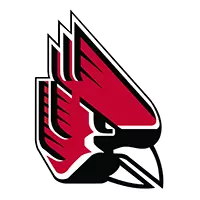University of Massachusets Athletics
A Letter from the desk of the Athletic Director
A Letter from the desk of the Athletic Director
As you no doubt know by now, the Athletic Department, in conjunction with the Chancellor's Office, President's Office and Board of Trustees, recently announced the elimination of seven varsity teams effective for the 2002-03 academic year.
The basis for these cuts was a mandate from the University that the Athletic program reduce its operating budget $500,000 to $700,000. After months of review and painful deliberation, our staff put forth a plan to eliminate the sports of men's and women's gymnastics, men's and women's water polo, women's volleyball, men's tennis, and men's indoor track. Members of the Chancellor's staff, the President's staff, the Board of Trustees, and the Athletic Council took part in the presentations and deliberations as we made the very difficult choices of how to address the budget mandate.
We knew going into this that there was no way to make this decision acceptable to everyone. Someone-student-athletes, coaches, alums, supporters of whatever sports were selected-was going to be hurt. There has been no joy in this process for anyone involved. Regardless of the economic realities that necessitated this action, cutting sports and removing opportunities for young people is not why any of us got into this business. To see people lose jobs, to see student-athletes forced to transfer if they want to compete again or stay behind to complete their degree program without the opportunity to compete is a very difficult thing to witness as a person who has spent his whole life involved in athletics, as an athlete, a coach, and an administrator.
Although we knew it would never be a popular choice, the decision to eliminate these sports was the correct one. There is the economic element and then there is the very real human element, and unfortunately, the two don't always mesh. With 29 intercollegiate sports, we rank third in the nation among all public institutions. As we have said many times before, that number is not realistic without the revenues of Division I-A football or the endowments of the Ivy League. With the 22 remaining sports, we still rank well above the national average for Division I, which is 18. But base funding for this athletic department should not require that men's basketball make the Final Four or the Elite Eight. Base funding should be able to withstand an average season. An exceptional season should be a windfall for the University and the athletic program, not a necessity to stay afloat.
I would like to address some of the issues that have been portrayed in the media of late:
* Why weren't across the board cuts made which could have saved the sports? If you are at UConn with a budget in the area of $30 million for 24 sports, maybe you could do that. But at UMass, with $17 million supporting 29 sports, there is not much fat that can be trimmed from this athletic budget. We are committed to keeping this athletic program strong. Trying to support 29 sports on the dollars available to us would ensure that more sports would be left to die a slow death. While this kind of across the board mediocrity was an option, it was not a very attractive one.
* Why was football not touched, despite losses of $2.5 million? Football has become a target for the Faculty Senate and others, but in higher education, cost per student is a common measuring stick. Football has a large number of participants. This is not news. What probably is news to those attacking the program is that UMass football ranks only fifth in cost per student-athlete among all of our sports. The University and the Board of Trustees have made a commitment to play Division I-AA scholarship football in the Atlantic 10 Conference. Until we are told otherwise we will support the sport at a level that allows us to be competitive. This is one of our most visible sports, as well as one of our most successful, earning one of the few national championships this school has ever produced, another appearance in the national championship game, six NCAA Playoff appearances and a league record 17 Yankee/Atlantic 10 Conference championships. In the big picture, it is one of the few vehicles available to the University capable of bringing 10,000 people or more to campus. Bringing people to campus and involving them with other aspects of the University is one of the most important contributions the Athletic Department can make.
* Why is softball allowed to take trips to Florida, Arizona and Georgia when money is so tight? Softball has been given a budget to work with based on its level of success, and the program stays within that budget. Right now it is pretty obvious that softball is generating more positive exposure for the University and the athletic program than any other women's sport. Why would you jeopardize that?
* The number of associate athletic directors that we have in the program. We have added only one new position, a compliance director, during my nine years as athletic director. We have promoted some people which resulted in title changes, but in terms of functionality, there has not been any significant increase in the size of the athletic administration. Instead of a ticket manager we have an Assistant AD for Tickets and Game Operations. Instead of a Director of Sports Medicine, we have an Associate Athletic Director for Sports Medicine. These represent title changes, but they are not new positions. Whether there are 29 sports or 22, we still need people to oversee the areas of Academics, Compliance, Sports Medicine, Business & Finance, Sports Programs, External Affairs, Development, and Facilities. In most of these areas our staff size is very thin when compared with other flagship universities.
It is unfortunate, but people are getting caught up in the rhetoric and missing the point. The issue is resources. We have too many sports and not enough resources to support them. Our charge when I took over this program was to build a strong athletic program, both academically and athletically. We have done that, establishing ourselves as the dominant program in our conference in both of those areas. We have now reached a point that the University can no longer afford us at the current funding level. Let's not forget that any successes we have been able to achieve, whether the basketball Final Four, the football national championship, softball's trips to the College World Series, women's rowing's fourth place finish at the NCAAs, or the host of others, have come because of the financial support supplied to us from the state, the Board of Trustees and the University administration.
We have been told that the administration will do what is necessary to help strengthen the sports that remain. My biggest concern is that they live up to that commitment. Otherwise, a year from now we might be looking at what to cut next. And I would hope no UMass student-athlete ever has to go through this experience again.
Sincerely,
Bob Marcum
|
|
 Athletic Director Bob Marcum |
As you no doubt know by now, the Athletic Department, in conjunction with the Chancellor's Office, President's Office and Board of Trustees, recently announced the elimination of seven varsity teams effective for the 2002-03 academic year.
The basis for these cuts was a mandate from the University that the Athletic program reduce its operating budget $500,000 to $700,000. After months of review and painful deliberation, our staff put forth a plan to eliminate the sports of men's and women's gymnastics, men's and women's water polo, women's volleyball, men's tennis, and men's indoor track. Members of the Chancellor's staff, the President's staff, the Board of Trustees, and the Athletic Council took part in the presentations and deliberations as we made the very difficult choices of how to address the budget mandate.
We knew going into this that there was no way to make this decision acceptable to everyone. Someone-student-athletes, coaches, alums, supporters of whatever sports were selected-was going to be hurt. There has been no joy in this process for anyone involved. Regardless of the economic realities that necessitated this action, cutting sports and removing opportunities for young people is not why any of us got into this business. To see people lose jobs, to see student-athletes forced to transfer if they want to compete again or stay behind to complete their degree program without the opportunity to compete is a very difficult thing to witness as a person who has spent his whole life involved in athletics, as an athlete, a coach, and an administrator.
Although we knew it would never be a popular choice, the decision to eliminate these sports was the correct one. There is the economic element and then there is the very real human element, and unfortunately, the two don't always mesh. With 29 intercollegiate sports, we rank third in the nation among all public institutions. As we have said many times before, that number is not realistic without the revenues of Division I-A football or the endowments of the Ivy League. With the 22 remaining sports, we still rank well above the national average for Division I, which is 18. But base funding for this athletic department should not require that men's basketball make the Final Four or the Elite Eight. Base funding should be able to withstand an average season. An exceptional season should be a windfall for the University and the athletic program, not a necessity to stay afloat.
I would like to address some of the issues that have been portrayed in the media of late:
* Why weren't across the board cuts made which could have saved the sports? If you are at UConn with a budget in the area of $30 million for 24 sports, maybe you could do that. But at UMass, with $17 million supporting 29 sports, there is not much fat that can be trimmed from this athletic budget. We are committed to keeping this athletic program strong. Trying to support 29 sports on the dollars available to us would ensure that more sports would be left to die a slow death. While this kind of across the board mediocrity was an option, it was not a very attractive one.
* Why was football not touched, despite losses of $2.5 million? Football has become a target for the Faculty Senate and others, but in higher education, cost per student is a common measuring stick. Football has a large number of participants. This is not news. What probably is news to those attacking the program is that UMass football ranks only fifth in cost per student-athlete among all of our sports. The University and the Board of Trustees have made a commitment to play Division I-AA scholarship football in the Atlantic 10 Conference. Until we are told otherwise we will support the sport at a level that allows us to be competitive. This is one of our most visible sports, as well as one of our most successful, earning one of the few national championships this school has ever produced, another appearance in the national championship game, six NCAA Playoff appearances and a league record 17 Yankee/Atlantic 10 Conference championships. In the big picture, it is one of the few vehicles available to the University capable of bringing 10,000 people or more to campus. Bringing people to campus and involving them with other aspects of the University is one of the most important contributions the Athletic Department can make.
* Why is softball allowed to take trips to Florida, Arizona and Georgia when money is so tight? Softball has been given a budget to work with based on its level of success, and the program stays within that budget. Right now it is pretty obvious that softball is generating more positive exposure for the University and the athletic program than any other women's sport. Why would you jeopardize that?
* The number of associate athletic directors that we have in the program. We have added only one new position, a compliance director, during my nine years as athletic director. We have promoted some people which resulted in title changes, but in terms of functionality, there has not been any significant increase in the size of the athletic administration. Instead of a ticket manager we have an Assistant AD for Tickets and Game Operations. Instead of a Director of Sports Medicine, we have an Associate Athletic Director for Sports Medicine. These represent title changes, but they are not new positions. Whether there are 29 sports or 22, we still need people to oversee the areas of Academics, Compliance, Sports Medicine, Business & Finance, Sports Programs, External Affairs, Development, and Facilities. In most of these areas our staff size is very thin when compared with other flagship universities.
It is unfortunate, but people are getting caught up in the rhetoric and missing the point. The issue is resources. We have too many sports and not enough resources to support them. Our charge when I took over this program was to build a strong athletic program, both academically and athletically. We have done that, establishing ourselves as the dominant program in our conference in both of those areas. We have now reached a point that the University can no longer afford us at the current funding level. Let's not forget that any successes we have been able to achieve, whether the basketball Final Four, the football national championship, softball's trips to the College World Series, women's rowing's fourth place finish at the NCAAs, or the host of others, have come because of the financial support supplied to us from the state, the Board of Trustees and the University administration.
We have been told that the administration will do what is necessary to help strengthen the sports that remain. My biggest concern is that they live up to that commitment. Otherwise, a year from now we might be looking at what to cut next. And I would hope no UMass student-athlete ever has to go through this experience again.
Sincerely,
Bob Marcum

.png&type=webp)





